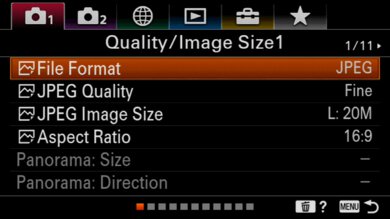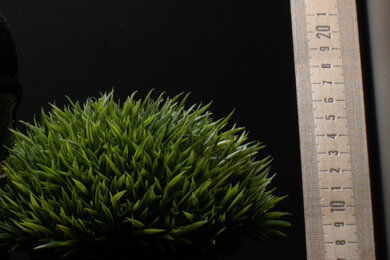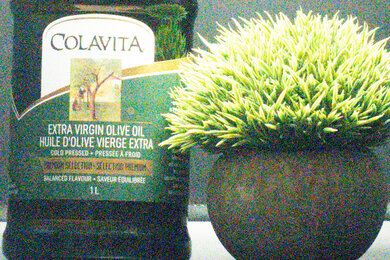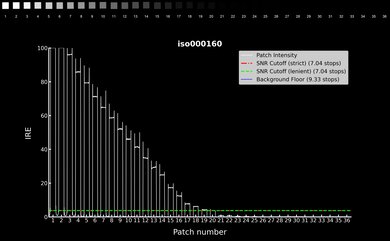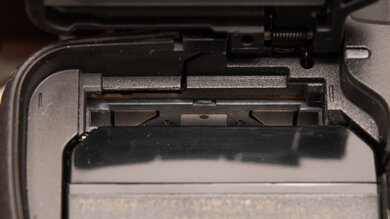The Sony α6100 is an entry-level mirrorless camera. It sits below the Sony α6400 and the Sony α6600 in Sony's 2019 APS-C lineup. It's the simplest and cheapest of the three models, with a slightly cheaper build quality. It also has a lower-resolution screen and viewfinder. Otherwise, it shares the same great sensor and top-of-the-class autofocus as its stablemates, making it a well-rounded beginner camera with a large stable of compatible E-mount lenses.
Our Verdict
The Sony α6100 is great for travel photography. It's quite compact and easy to carry around. Image quality is great overall for its class, and its autofocus system also does a pretty good job of tracking and maintaining focus on various subjects. It also has a good overall battery life for a mirrorless camera. Unfortunately, its menu system and user interface aren't the most intuitive.
- Great image quality.
- Excellent overall autofocus performance in still photography and video.
- Compact, sturdy design.
- Very good battery performance.
- Menu system can take some time to get used to.
The Sony Alpha 6100 is a great choice for landscape photography. Images are sharp, and it does a decent job of managing noise in dimmer lighting conditions. It also has good dynamic range to preserve a fairly wide range of detail in high-contrast scenes like landscapes. On top of that, the camera is lightweight and portable, so you can carry it around on hikes without too much difficulty.
- Compact, sturdy design.
- Very good battery performance.
- Sharp, bright flip-out screen.
- Good dynamic range.
- Menu system can take some time to get used to.
The Sony α6100 is good for sports and wildlife photography. While its maximum shooting speed is quite quick, making it somewhat simple to capture distinct images of moving subjects, it takes quite a bit of time to clear its photo buffer, leading to long interruptions in your shooting sessions if you don't keep continuous bursts short. Thankfully, the camera has an effective autofocus system with pretty reliable subject tracking. However, it can sometimes lose track of quicker or more erratic subjects.
- Great image quality.
- Excellent overall autofocus performance in still photography and video.
- Takes a long time to clear its buffer.
- Menu system can take some time to get used to.
The Sony Alpha 6100 is decent for vlogging. You can tilt its screen all the way up to face you, but it's less suited to vlogging than a fully articulated screen, as any video accessories attached to the hot shoe will get in the way. Still, the camera is highly portable and lightweight for on-the-go shooting, and its autofocus system does an excellent job of keeping faces in focus. Its overall video quality is also good, but the lack of in-body image stabilization can give handheld footage a somewhat shaky quality.
- Excellent overall autofocus performance in still photography and video.
- Compact, sturdy design.
- Sharp, bright flip-out screen.
- Good video recording quality.
- Menu system can take some time to get used to.
- Poor video stabilization performance in 4k.
- Limited support for 4k frame rate recording options.
The Sony α6100 is decent for studio video, though it isn't really intended for more advanced video work. It captures good overall video quality for its class and offers a fair amount of frame rate options with a reliable and effective autofocus system. However, it doesn't support Log recording, and it's limited to 8-bit 4:2:0 recording, limiting your flexibility in post. Aside from that, it also lacks a headphone jack to monitor your audio in-camera.
- Excellent overall autofocus performance in still photography and video.
- Very good battery performance.
- Good video recording quality.
- Menu system can take some time to get used to.
- No headphone jack.
The Sony α6100 isn't meant for POV-style action video. It's quite compact but still isn't really designed to be attached to a helmet or chest rig. It isn't waterproof or weather-resistant and doesn't support any high-speed frame rate recording options in 4k, though it can record slow-motion footage at up to 120 fps in 1080p.
- Compact, sturdy design.
- Poor video stabilization performance in 4k.
- Limited support for 4k frame rate recording options.
The Sony Alpha 6100 captures good RAW image quality. Images appear sharp and detailed, and the sensor has good dynamic range, making it fairly well-suited to capturing high-contrast scenes. That said, its noise handling is only decent in low-light situations.
- Good dynamic range.
- Images look sharp and detailed.
- Decent noise handling.
Performance Usages
Changelog
-
Updated May 06, 2025:
We wrote text for the new tests added in Test Bench 0.13.
- Updated Feb 11, 2025: We've converted this review to Test Bench 0.13. We've added new tests for Video Dynamic Range and Luminosity Patch Detection. You can learn more about these updates in the changelog.
- Updated Apr 19, 2024: We've added full text to this review and rewrote the existing text to meet our current standards.
- Updated Jan 29, 2024: Added text to the 'Raw Photo Performance' verdict box.
Check Price
Differences Between Sizes And Variants
The Sony Alpha 6100 only comes in one color: Black. You can purchase the camera body on its own or bundled with a kit lens like the Sony E 16-50mm 3.5-5.6/PZ OSS lens or other lenses, depending on the retailer.
You can see our unit's label here.
Popular Camera Comparisons
The Sony α6100 is a solid beginner camera. As the cheapest option in Sony's APS-C lineup, sitting below the Sony α6400 and Sony α6600, it has a few drawbacks, namely a lower-resolution EVF and cheaper build quality. But at this price point, there's still plenty to like about the camera, including quick, reliable autofocusing, a highly portable body, and a wide selection of E-mount lenses with which to pair the camera.
For more options, check out our recommendations for the best cameras for vlogging, the best budget mirrorless cameras, and the best cameras for beginners.
The Sony α6400 is a bit better than the Sony α6100, though both cameras use the same sensor, providing similar image quality, and have the same lens mount. Still, the α6400 has slightly better build quality, with some degree of weather-sealing and a higher-resolution EVF.
The Sony α6100 is a bit better than the Sony α6000. They look and perform similarly overall. However, because the α6100 is a newer model, it has an improved autofocus system and a newer sensor with slightly better dynamic range and high-ISO performance. It can also record 4k video. The α6000 still offers a lot of value for its price, especially if you don't do a lot of video work.
The Canon EOS R50 is a bit better overall than the Sony α6100. It has a higher-resolution viewfinder, quicker burst shooting, and better video features. However, the Sony has a wider lens selection, so it could be better if you have your sights set on particular E-mount lenses.
The Sony α6100 and the Sony ZV-E10 are similar APS-C mirrorless cameras. The ZV-E10 is more geared toward vlogging, with no viewfinder and a fully articulated screen. The ZV-E10 also has a slightly newer version of Sony's AF system, has an updated color science to improve skin tones, and includes an e-stabilization feature in video mode. Otherwise, the cameras offer very similar image and video quality and overall performance.
Test Results

The Sony α6100 is very portable for an interchangeable lens camera, making it easy to take on the go. It's significantly more compact and lightweight than most of its peers, like the Nikon Z 50, and full-frame models, like the Sony α7 III.
The camera's build quality is good. It's primarily made of decently high-grade plastic, so it's a step down from the weather-sealed magnesium alloy body of the Sony α6400, but it's still solid for its class. The buttons and dials offer good physical feedback without too much slack, and the screen's tilting mechanism feels solid. The inputs and battery compartment are also covered by solid-feeling hinged doors.
The camera's ergonomics are good. It may be a bit too cramped for those with larger hands to operate comfortably, but otherwise, the controls are pretty well-placed, with enough room for your thumb to rest without accidentally making an input. The grip is also well-textured and provides a secure hold.
The Sony α6100 doesn't have the largest or highest-resolution EVF. It has a lower resolution than the viewfinders found on the Sony α6400 or Sony α6600, so the image won't be quite as sharp or clear.
The camera has a tilting screen, which is well-suited to waist-level shooting. It also tilts all the way up to face forward for vlogs or selfies. The tilting mechanism feels sturdy, and the display is bright enough to overcome glare. It doesn't have the highest resolution on the market, but it's still decent for quickly reviewing your images on the go. The screen's touch capability is limited to selecting focus points.
The menu system is okay. Like other older Sony cameras, it isn't particularly intuitive or clearly organized. There are many, many submenus and settings pages, and it can be somewhat difficult to find exactly what you're looking for. It doesn't help that you can't use the touchscreen to navigate through it. That said, there are a ton of customization options, including custom menus and a quick menu that makes it easier to find your most-accessed settings once you set things to your liking.
The Sony α6100 uses a version of the same APS-C sensor and BIONZ X processor as the Sony α6400 and Sony α6600. It has a relatively high resolution and wide ISO range. While on paper, things haven't changed much from the Sony α6000, the sensor has come a long way in areas like dynamic range and color rendering, as you can see by comparing the α6100's dynamic range test scene photo here, versus the α6000's test scene photo here.
The camera has good overall battery performance. It's CIPA-rated for 420 shots on a full charge. These numbers should be taken with a grain of salt, as real-world battery performance will vary depending on your shooting habits and settings, but generally, Sony is ahead of the game when it comes to battery life. For instance, the Sony α6000 has a notably higher CIPA rating than, say, the Nikon Z 50.
As far as video goes, it can record about 1.5 hours of continuous 4k video before the battery goes out, which is good, though you'll likely encounter overheating well before that point when shooting in 4k, effectively limiting your battery life. If you need to shoot for longer periods or use the camera for streaming, you can also power the camera externally or use a dummy battery.
The Sony Alpha 6100 shoots at a respectably quick max burst rate using its mechanical shutter, though it drops down slightly in e-shutter/silent mode. The camera only supports UHS-I SD cards, so the buffer fills up fairly quickly compared to higher-end cameras. It's still decent, with over twice the capacity for RAW files and a little less than twice the capacity for JPEG files as the Canon EOS M50 Mark II. Unfortunately, if you do fill up the image buffer, it takes a very long time to empty, which can slow you down at a critical moment.
Like other Sony cameras, this model uses a hybrid autofocus system with both phase- and contrast-detection focus points. This generation of Alpha cameras has what Sony calls 'Real Time AF Tracking,' which integrates the camera's subject detection with face and eye detection so that the camera can seamlessly switch between them as the subject moves around. It works very intuitively and effectively, though the area mode options and settings can be a little overwhelming at first.
While the camera's tracking abilities don't surpass that of higher-end full-frame models like the Sony α7 III, it still does an okay job overall. It can keep up quite well with faster subjects, managing a good usable hit rate. More erratic movements can cause some trouble, but the camera is usually quick to re-acquire focus. One other thing to note is that, unlike the Sony α6400 or Sony α6600, the α6100 doesn't have a focus priority option when shooting continuously with AF-C, meaning the camera will prioritize maintaining a consistent shooting speed over acquiring focus. That likely contributes to the slight difference in performance between this model and its stablemates.
If you prefer not to rely on tracking and use a single center AF point, the camera performs remarkably well. It's quick and accurate, and it can near-seamlessly keep your target in focus as long as they remain under the focus point.
The Sony α6100 doesn't have any kind of in-body image stabilization, but you can pair it with optically stabilized lenses. Using the optically stabilized Sony E 16-50mm 3.5-5.6/PZ OSS kit lens, we managed to get clear handheld shots at very slow shutter speeds. That said, stabilization performance can vary depending on many factors, including the specific lens, what focal length you're shooting at, and even how steady your hands are.
The Sony Alpha 6100 has good dynamic range. It's pretty on par with other APS-C cameras of its caliber, so it can preserve a fairly wide range of detail, but you won't get as wide a range as cameras with larger sensors.
The camera does an excellent job of resolving fine detail, thanks to its high-resolution sensor. You'll have some leeway to crop in your images without losing too much sharpness.
The camera has decent RAW noise handling in low light. You'll inevitably see more noise in dimmer lighting conditions, but RAW files hold up fairly well at moderately dim exposures.
The Sony Alpha 6100 has relatively limited video features, especially compared to the standards set by newer models like the Fujifilm X-S10 or the higher-end Sony α6700. If you just need a camera to record basic 4k or 1080p video, you'll be all set, but if you're looking for more advanced features like Log recording and 10-bit capture, you'll have to look elsewhere.
The α6100 can record 4k video at up to 30 fps, though shooting at 30 fps incurs a slight crop. Unfortunately, there are no higher frame rate options for incorporating slow motion.
The camera has okay internal recording capability in 4k. It captures video with decently high bit rates, but unfortunately, it can suffer from overheating issues. We started to encounter overheating interruptions after about 30 minutes of continuous recording and had to wait 10 minutes between interruptions before continuing to record. You likely won't have too many issues with shorter takes, but it's something to be aware of for streaming or longer recording sessions. On top of that, the camera is limited to 8-bit 4:2:0 capture, giving you less color information to work with, but it doesn't support Log recording and isn't intended for more advanced video work anyway.
The camera's autofocus performs amazingly well in 4k. Though it doesn't support more precise eye tracking in video mode, its human face tracking works very reliably to keep moving subjects in focus. Focus transitions are quite smooth and seamless for the most part.
Unfortunately, the sensor's readout speed is disappointing, resulting in heavy rolling shutter distortion. It's pretty bad and is even noticeable with relatively slow camera movements.
You get more frame rate options in 1080p at up to 120 fps, albeit with a slight crop at 120 fps. There's also a dedicated 'S&Q' (slow and quick) mode to record slow-motion footage in-camera.
As with 4k, 1080p bit rates are relatively high, and the camera is still limited to 8-bit 4:2:0 recording. Unlike some competitors, like the Canon EOS M50 Mark II, the Sony α6100 has no recording time limit, which is great. You're also less likely to experience overheating in 1080p.
The autofocus performs just as well in 1080p as it does in 4k. It has very little trouble smoothly and consistently tracking moving subjects.
Rolling shutter distortion isn't bad in 1080p. It's much less noticeable than in 4k, but you're still see some skewing with quicker camera movements.
Unfortunately, the Sony a6100 doesn't offer any Log recording formats, so its video dynamic range is limited. You'll have less flexibility to edit and pull out detail in high-contrast scenes, since the overall dynamic range above the noise floor is limited.
Tested settings:
- Resolution: 4k
- Frame Rate: 30 fps
- Log Format: N/A
The camera uses the older Micro USB standard for charging and file transfer. It also has a Micro HDMI port to connect to an external display or monitor and a microphone input, but unfortunately, it doesn't have a headphone jack to monitor your audio in-camera.








